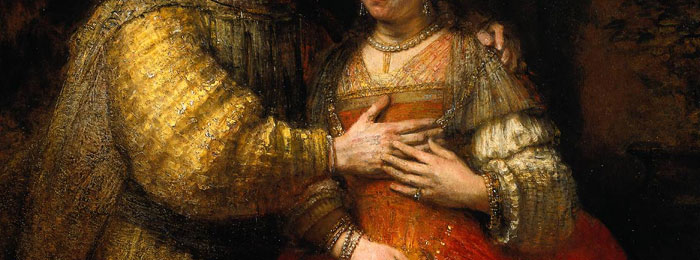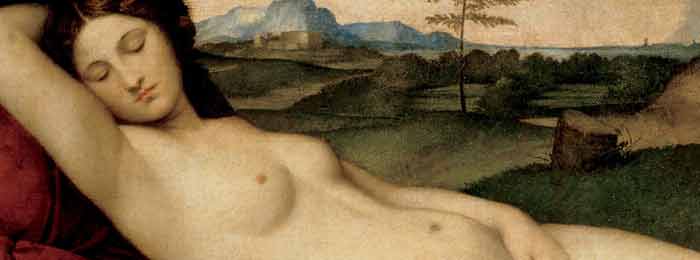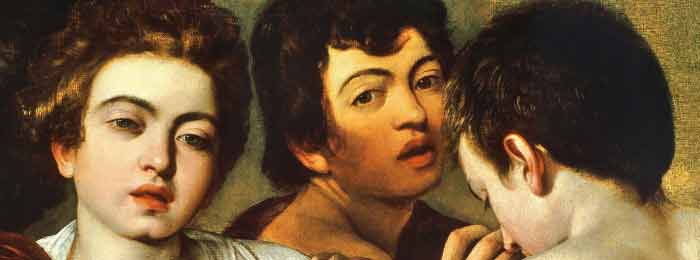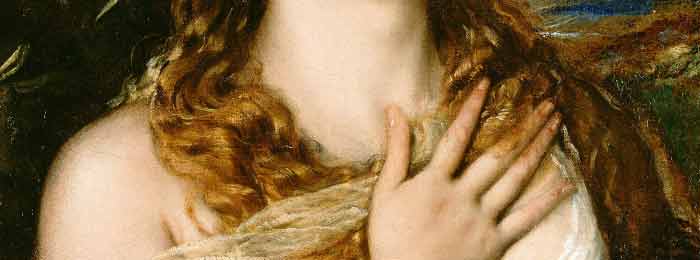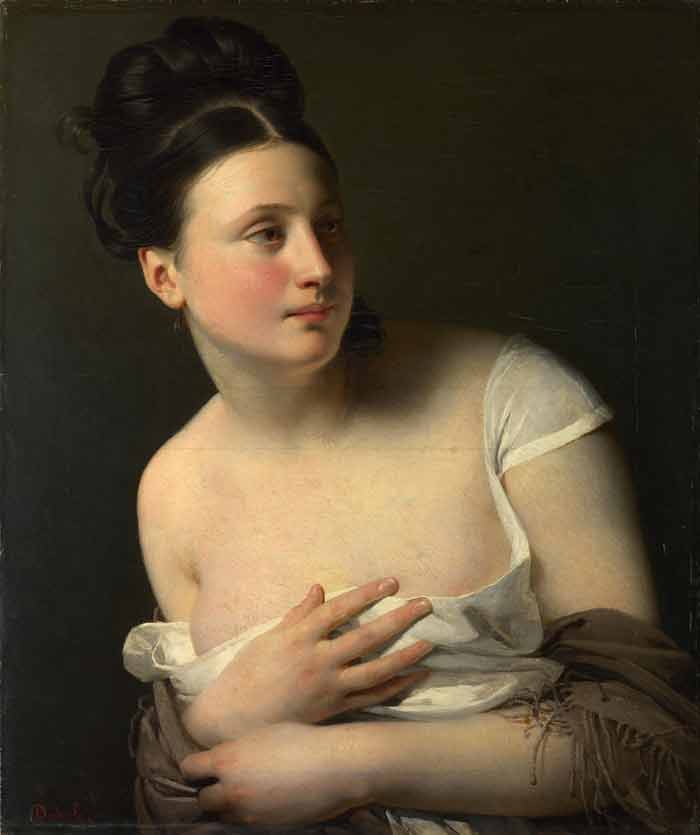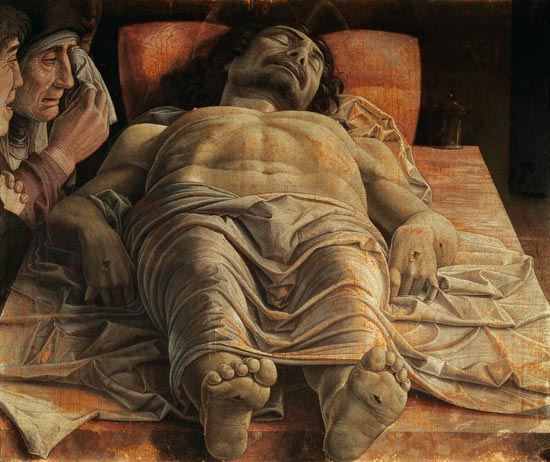On 31 Aug, 2015 With
Rembrandt, who is thought to have learned from Jacob van Swanenburgh and Pieter Lastmann, no doubt took stylistic cues from the Flemish Technique, the Venetian Technique, and the Direct Painting Technique. When observing his work, one can see that he experimented freely with them, moving between them, but he most certainly employed them all. Over time, as he learned each method, he incorporated aspects from all into a his style—while, of course, adding innovations of his own. Some of his paintings utilize wood as a canvas, as was common with the Flemish Technique, which he appears to have used predominantly in those works. In addition to this, a few of his small studies on wood panels seem to have utilized…
Read More
On 18 Aug, 2015 With
Venetian Painting Techniques The painting techniques employed by Northern Renaissance artists strongly influenced the work of renowned painters, such as Titian and Giorgione, during the Italian Renaissance. Venetian artists also greatly impacted the styles of this period, notably the Van Eyck brothers. The oil painting techniques developed by these Flemish painters around the year 1400 combined the use of egg tempera and oil painting, with the underpainting being created using a grisaille technique of tempera, while pure colored oil glazes were carefully applied on top. This combination painting technique added remarkable lustre to their small panel paintings, resulting in striking jewel-tones, the most vivid hallmark of the brothers’ famous style. Prior to the Van Eyck brothers’ success with their combination…
Read More
On 13 Apr, 2015 With
Venetian Painting Technique The Venetian painting technique was developed from many prior classical painting techniques, and is in effect a culmination of the methods that came before it. The approach to Venetian painting outlined below is a modified version that builds on the Renaissance method, incorporating modern chemicals and a contemporary palette. Venetian painting methods rose to prominence in the 17th century, and were used by painters like Titian, Caravaggio, and Velazquez. The most widespread use of these techniques was witnessed during the Baroque period, and they are ideal for still life painting, portraiture, and compositions that use strong, single-source lighting. The Technique– 1. The first step to creating this type of painting is a basic underdrawing which records the…
Read More
On 30 Aug, 2014 With
Sometime around the end of the seventeenth century, the painting methods so beloved of the old masters were mysteriously lost—how exactly, no one is really sure. Ever since then, artists have tried and fail to rediscover these techniques, which yielded the masterpieces of Titian, Rubens, Rembrandt and Velasquez. The origins of these techniques can be seen as well in the artists that came before them (Jan Van Eyck, Memling, Giovanni Bellini and others) in a more rudimentary form and always on a much smaller scale, being limited by a lack of proper canvas and materials. For reasons not yet known, something of the inherent magic of oil painting seemed to have dulled after the Renaissance, with a dampening (subtle…
Read More
On 25 May, 2011 With
Manet’s Oil Painting Technique Manet differed from Couture on one very significant technical issue. Whereas his master taught the careful analysis and rendering of midtones, Manet believed that light presents itself so forcefully to the eye that it should be depicted by simplified tones in order to retain its immediacy. In reducing midtones and concentrating on simple areas of dark and light, Manet flattened the picture plane, because he negated illusionism, which was achieved by subtle transitions. His interpretation of the effects of light on the perception of objects was doubtless enhanced by photographic evidence. The camera provided proof of the translation of’ three-dimensional information into two-dimensional information; it became obvious that form could be represented by a reduced tonal…
Read More
On 31 Jan, 2011 With
Painting techniques – Tenebrism Tenebrism, from the Italian tenebroso (“murky”), (also called dramatic illumination) is a style of painting using very pronounced chiaroscuro, where there are violent contrasts of light and dark, and darkness becomes a dominating feature of the image. Caravaggio is generally credited with the invention of the style, but the term “Tenebrist” is more likely to be applied to later painters under his influence. However, Caravaggio is so closely associated with Tenebrism, that the word “Caravaggism” is sometimes applied in an almost synonymous fashion, or the phrase “Caravaggesque tenebrism” is sometimes used. The term is less used by art historians in recent decades, and lacks a clear definition. The word is capitalised by some art historians, and…
Read More
On 23 Jan, 2011 With
Classical painting techniques in Renaissance – Foreshortening Part 4 Foreshortening refers to the visual effect or optical illusion that an object or distance appears shorter than it actually is because it is angled toward the viewer. Although foreshortening is an important element in art where visual perspective is being depicted, foreshortening occurs in other types of two-dimensional representations of three-dimensional scenes. Some other types where foreshortening can occur include oblique parallel projection drawings. Figure F1 shows two different projections of a stack of two cubes, illustrating oblique parallel projection foreshortening (“A”) and perspective foreshortening (“B”). This technique was often used in Renaissance painting.
Read More
On 21 Jan, 2011 With
Classical painting techniques: Perspective Part 3 The use of Perspective: The first major treatment of the painting as a window into space appeared in the work of Giotto di Bondone, at the beginning of the 14th century. True linear perspective was formalized later, by Filippo BrunelleschiLeon Battista Alberti. In addition to giving a more realistic presentation of art, it moved Renaissance painters into composing more paintings. Prior to the Renaissance, a clearly modern optical basis of perspective was given in 1021, when Alhazen (al-Hasan Ibn al-Haytham, d. ca. 1041 CE), an Iraqi physicist and mathematician, in his Book of Optics (Kitab al-manazir; known in Latin as De aspectibus or Perspectiva), explained that light projects conically into the eye. Alhazen’s geometrical,…
Read More
On 6 Aug, 2004 With
Oil colour, with its standard, lends well with the glazing techniques with a smooth polished finish. Though, there are a huge variety of texture effects that can be attained in oil painting using customary techniques like impasto, or just through trialing, this article will glance through some admired oil painting effects, and how they are able to be used in achieving texture.Impasto Technique: Prepare yourself with heaps of oil colour previous to embarking on an impasto oil painting voyage. Impasto technique is the process of applying huge quantities of paint with a brush or palette knife, generally with a very gestural brilliance. The effect is a three-dimensional facet to the surface. Frequently, definite mediums created for impasto painting are used…
Read More
On 9 Feb, 2004 With
Painting is an art of using pigments, paints and colors on the surface. The surfaces which are used for painting are paper, wood, lacquer, clay and canvas. Anything could be depicted or expressed through painting. The painting can be either natural or can be a representation.Painting – historyThe old paintings date back to 32,000 years. In those days, pictures were engraved using red ochre (it is used as a pigment in making paints) and black pigment. The earliest evidence for painting had been discovered in two rock shelters in Northern Australia. Western cultures used oil and watercolor paintings as the medium, their paintings depict complex traditions in a rich and stylish manner.Painting techniques- The artist makes use of his creativity…
Read More


